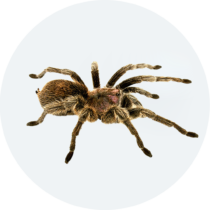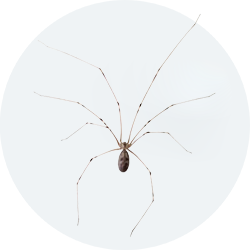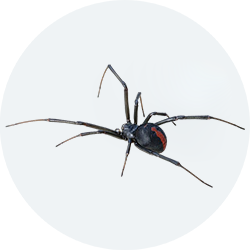Spiders
Spiders are predators, feeding primarily on insects and household pests. They Are shy and commonly found in dim cool places that are rarely disturbed by humans. Most are active only at night and will try to escape when confronted. Larger spiders may try to bite humans if alarmed, but are generally incapable of piercing human skin. Tropical spiders may be imported with goods – some may be dangerous to human’s e.g Black widow (Latrodectus mactans) ad Redback spider (Lactrodectus hasseltii).


Characteristics: Pale yellow to light brown or grey with very long thin legs.
Legs: 8
Habitat:
Found in damp cellars, basements, crawlspaces, garages, and dark quiet places.
Habits:
- Natural enemies of the large house spiders that live in homes.
- Constructs webs in corners and ceilings, usually hanging belly-up.

Characteristics: Female Redback Spiders are black (occasionally brownish) with an obvious orange to red longitudinal stripe on the upper abdomen, with the red stripe sometimes being broken, and an “hourglass” shaped red/orange spot on the underside of the abdomen.
Legs: 8
Habits:
- They stay hidden in their webs during the day and venture out when the sun goes down.
- Construct web in dry, secluded spots mostly in ground level, such as under logs and rocks or in the corners of man-made structures.
Habitat:
The Redback Spider favours proximity to human habitation, with webs being built in dry, sheltered sites, such as among rocks, in logs, shrubs, junk-piles, sheds, or toilets.


